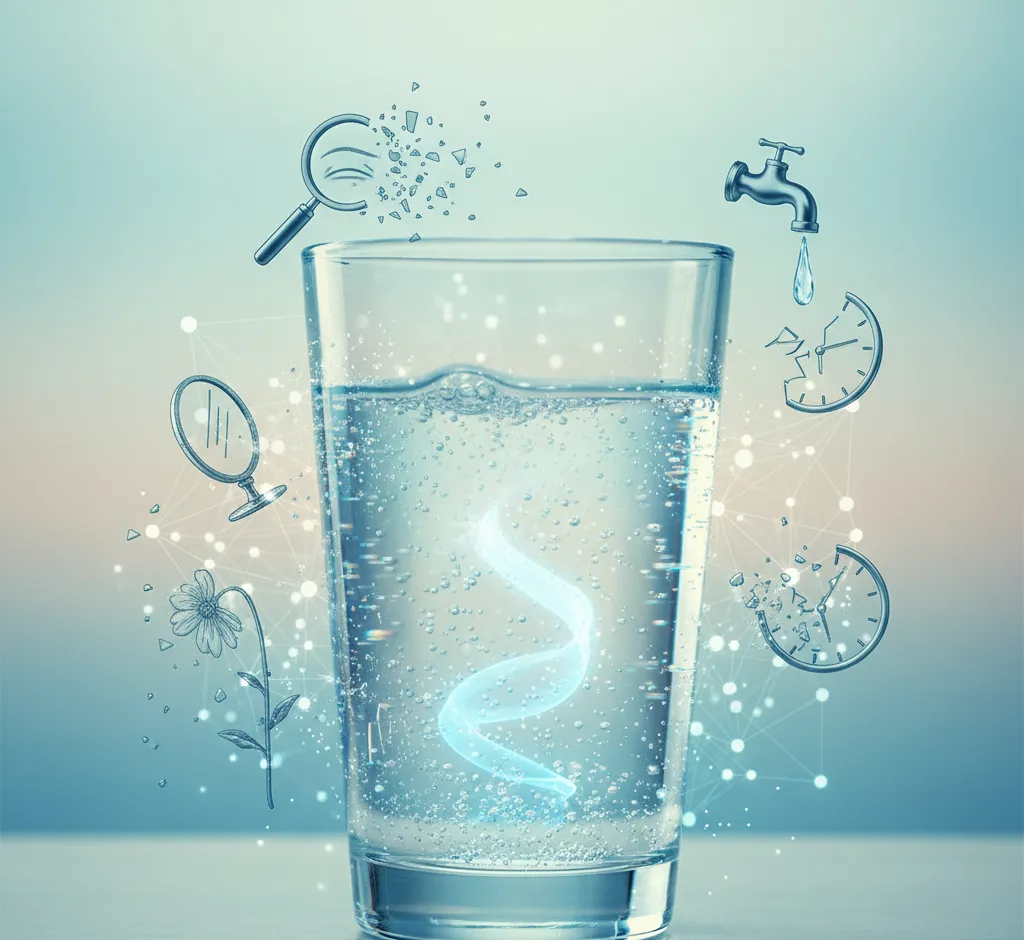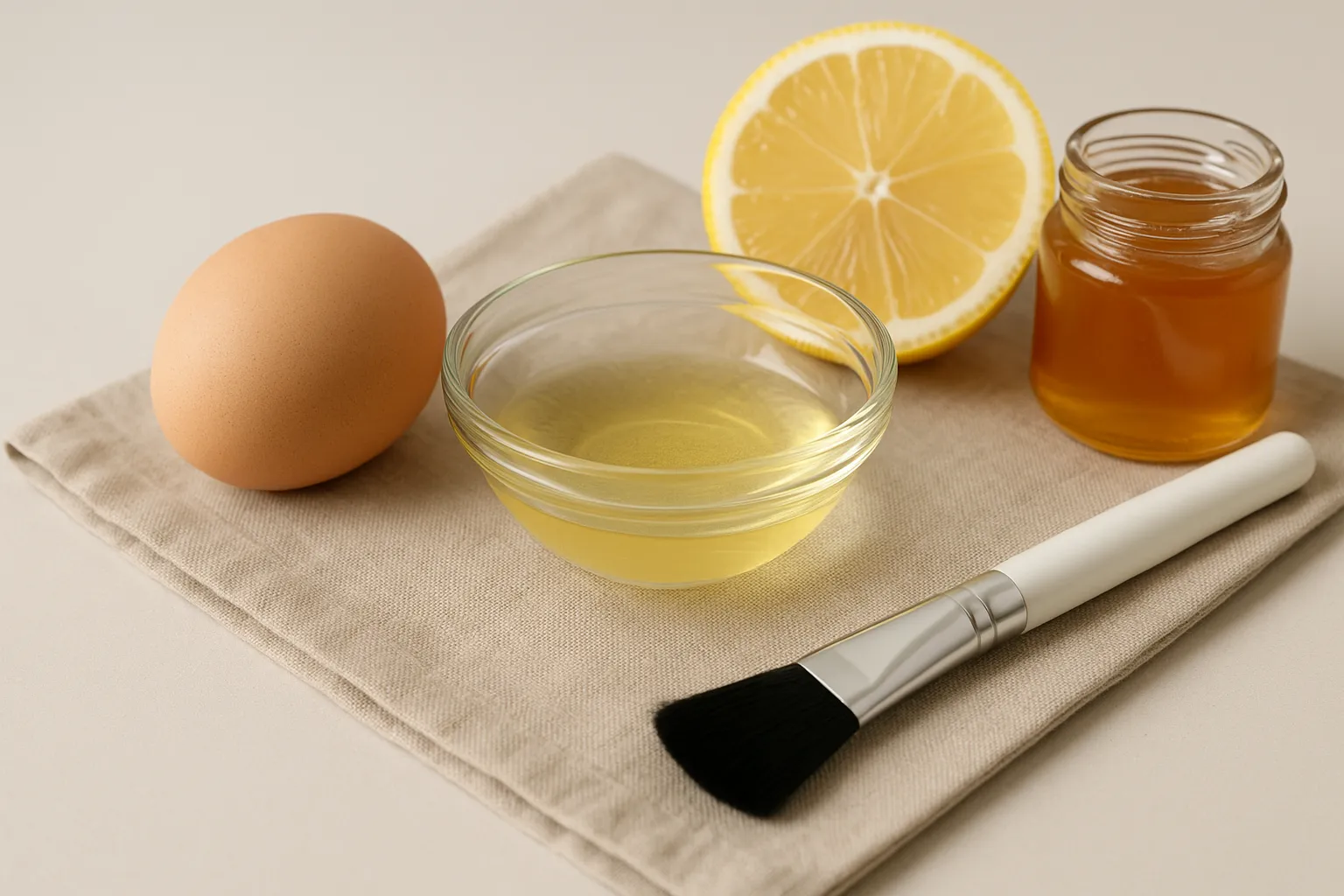The Hydration Hoax: Debunking 7 Water Intake Myths That Beauty Magazines Still Promote
We debunk the most common water intake myths promoted in beauty magazines, from the 8x8 rule to clearing wrinkles, with scientific facts on hydration, skin health, and how to truly achieve a healthy glow.

The Hydration Hoax: Debunking 7 Water Intake Myths That Beauty Magazines Still Promote
For decades, beauty magazines and influencers have championed a simple, almost miraculous cure for every skin ailment: drink more water. From erasing wrinkles to shrinking pores and giving you an instant 'glow,' the promise of a flawless complexion, delivered in eight glasses a day, has become foundational beauty gospel. It’s an easy, accessible, and highly marketable message, but is it true? As we delve into the science, the answer is far more nuanced—and the widespread promotion of these hydration myths often distracts from what truly creates healthy, resilient skin.
While water is, without question, essential for life and overall bodily function (including the proper functioning of skin cells), the idea that drinking water in excess acts as a cosmetic miracle is largely unsupported by rigorous scientific evidence. This article dissects the most pervasive water intake myths found on newsstands and digital platforms, offering a grounded, dermatological perspective.
Myth 1: The '8x8 Rule' is The Gold Standard for Skin Hydration
The Magazine Mantra:
“You must consume at least eight 8-ounce glasses (approx. 1.9 litres) of plain water daily, regardless of your activity level, climate, or body size, to ensure your skin stays plump and dewy.”
The Scientific Reality:
The 8x8 rule is a convenient but arbitrary guideline. The truth is that **adequate daily fluid intake is highly individual**. A massive meta-analysis cannot find a single, universal quantity that applies to every human being. Your actual fluid needs are dictated by:
- Body Weight and Composition: Larger individuals or those with more muscle mass generally require more water.
- Activity Level: Sweating due to exercise or strenuous activity significantly increases fluid loss.
- Climate and Environment: Hot, humid climates or high altitudes necessitate higher intake.
- Dietary Sources: A critical oversight in the myth is ignoring the role of food. Fruits, vegetables (like cucumber, watermelon, and celery), soups, and other beverages (including moderate coffee/tea) all contribute significantly to your daily fluid count. In fact, roughly 20% of your daily fluid intake comes from solid foods.
For most healthy adults, the National Academies of Sciences, Engineering, and Medicine (NAM) suggests a total daily fluid intake of about 15.5 cups (3.7 liters) for men and 11.5 cups (2.7 liters) for women, but this includes **all food and drinks**, not just plain water. Your best guide remains your body: drinking to thirst and monitoring urine color (pale straw color is ideal) is far more effective than forcing a specific quota.
Myth 2: Drinking Water Erases Fine Lines and Wrinkles
The Magazine Mantra:
“Chugging water fills out your skin, instantly smoothing fine lines and acting as a natural Botox.”
The Scientific Reality:
This is perhaps the most persistent and misleading myth. While severe, systemic dehydration *can* cause the skin to lose turgor, resulting in a temporarily wrinkled or 'crepey' appearance, **chronological wrinkles (fine lines from aging)** cannot be reversed simply by drinking extra water. Why?
- The Epidermis vs. The Dermis: The water you drink must first travel through your digestive system, be absorbed by the intestines, enter the bloodstream, and finally reach the **dermis** (the deeper layer of skin). It has very little immediate impact on the **stratum corneum** (the outermost layer, where dryness and fine lines are most visible).
- Collagen and Elastin: Wrinkles are caused primarily by the breakdown of **collagen** and **elastin** fibers, UV damage, and muscle movement over time. These are structural issues deep within the skin that water intake simply cannot fix.
As dermatologists frequently confirm, the appearance of fine lines is best managed by **topical hydration** (moisturizers, humectants like hyaluronic acid), **sun protection** (broad-spectrum SPF), and active ingredients like **retinoids**—not just increasing your water glass count.
Myth 3: Water ‘Flushes Out’ All Toxins and Clears Acne
The Magazine Mantra:
“The more water you drink, the more quickly you flush out the impurities and toxins that cause blemishes and dullness, purifying your system from the inside out.”
The Scientific Reality:
The concept of 'flushing toxins' through hyper-hydration fundamentally misunderstands human physiology. The primary 'purifiers' in your body are the **liver** and the **kidneys**. Their efficiency in detoxifying the body is primarily dependent on their health, not the sheer volume of water you consume. While the kidneys require water to produce urine, drinking excessive amounts does not make them work *faster* or *better*—it just produces more dilute urine.
Regarding Acne: Acne is a complex inflammatory condition caused by a combination of hormonal fluctuations, excess sebum production, bacteria (P. acnes), and clogged pores. There is no conclusive evidence that a high water intake can cure or prevent acne. In fact, over-hydration can lead to **hyponatremia** (dangerously low sodium levels), which is a serious, life-threatening condition, long before it clears a single pimple.
The most effective treatments for acne remain prescription retinoids, benzoyl peroxide, salicylic acid, and consultation with a dermatologist.
Myth 4: If You Have Dry Skin, You Must Be Dehydrated Internally
The Magazine Mantra:
“If your skin is flaky or tight, it’s a sure sign you’re not drinking enough. Dry skin = internal dehydration.”
The Scientific Reality:
This conflates two entirely different states: Dry Skin (Alipidic Skin) and Dehydrated Skin (Lacking Water). A person can be perfectly hydrated internally yet still suffer from dry, flaky skin. This is a common point of confusion in beauty reporting:
- Dry Skin (A Skin Type): Lacks oil (**sebum**). This is a genetic condition where the skin barrier lacks the natural lipids necessary to seal in moisture, leading to a compromised barrier. This requires **emollients** and **occlusives** (creams, oils) to replace the missing lipids.
- Dehydrated Skin (A Skin Condition): Lacks water in the stratum corneum. While internal dehydration can contribute, the primary cause is usually environmental (low humidity, harsh cleansers, damage to the skin barrier). This requires **humectants** (Hyaluronic Acid, Glycerin) and a proper topical barrier cream to prevent Transepidermal Water Loss (TEWL).
Unless you are experiencing other signs of clinical dehydration (dark urine, severe thirst, fatigue), your flakiness is almost certainly a topical barrier issue, which extra water cannot address.
Myth 5: Drinking Cold Water Burns More Calories
The Magazine Mantra:
“Swap out room-temperature water for ice water to fire up your metabolism and passively burn calories as your body works to warm the fluid.”
The Scientific Reality:
While technically true that your body expends *some* energy (calories) to warm ingested water to body temperature, the effect is so negligible that it has no meaningful impact on weight loss or metabolic health. You would need to drink an unfeasibly large, and potentially dangerous, amount of ice water to burn an equivalent number of calories found in a single small snack.
This myth is an example of the kind of hyperbole and focus on minor biological mechanisms that beauty magazines often employ to make a simple act feel like an exciting, secret 'hack.' The true metabolic benefits of hydration come from its role in facilitating the smooth operation of all cellular processes, including digestion and nutrient transport, which is best achieved through steady, moderate intake.
Myth 6: A Clear Complexion Means Perfect Hydration
The Magazine Mantra:
“The clearer your urine, the better-hydrated you are, and the more flawless your skin will be.”
The Scientific Reality:
Pale yellow urine is a sign of adequate hydration. **Perfectly clear urine**, however, is actually a sign of **over-hydration**. Drinking so much water that your urine is consistently colorless can deplete your body's essential electrolytes, notably sodium, which is necessary for nerve and muscle function.
Moreover, the jump from 'over-hydrated' to 'flawless skin' is scientifically unfounded. There is no point of diminishing returns for systemic hydration regarding your internal organs, and forcing yourself beyond the pale yellow mark provides no additional cosmetic benefit to the skin, while risking dangerous health consequences (hyponatremia).
Myth 7: Caffeinated Drinks Do Not Count Towards Your Water Intake
The Magazine Mantra:
“Coffee, tea, and soda are diuretics that steal water from your body. Only plain water counts toward your daily goal.”
The Scientific Reality:
This is a common, outdated belief. While caffeine is a mild diuretic (meaning it can slightly increase the production of urine), **studies have shown that caffeinated beverages, when consumed in moderation by habitual users, still contribute positively to overall fluid intake.** The net fluid loss is minimal to non-existent because the beverage itself contains a large volume of water.
Therefore, your daily cup of coffee or tea certainly counts toward your total fluid intake, provided it's consumed as part of a balanced fluid strategy. The focus should be on **total fluid consumption** from all sources, not isolating plain water as the only acceptable liquid.
The Real Hydration-Skin Connection: How to Get a *Real* Glow
The skin's appearance is a reflection of overall health, but its immediate hydration status is controlled by two main factors:
- Internal Hydration (Systemic): Ensuring your body avoids chronic dehydration. This keeps cellular function optimal, allowing the body to properly deliver nutrients and maintain blood flow. You achieve this by drinking to thirst, monitoring urine color, and including water-rich foods.
- External Hydration (Topical): This is the most direct way to influence the outer layer of the skin (stratum corneum). The SC is the barrier that prevents water loss (TEWL). When this barrier is damaged, the skin becomes dehydrated and looks dull.
To achieve the 'glow' promised by beauty magazines, focus on a balanced approach:
- Hydrate from the Outside: Use products containing humectants (Hyaluronic Acid, Glycerin) to attract water to the stratum corneum. Follow with a barrier-repairing occlusive (Ceramides, Petrolatum, Shea Butter) to lock it in.
- Protect the Barrier: Avoid harsh, stripping cleansers and excessive exfoliation. A compromised barrier is the primary cause of topical skin dehydration.
- Live Healthy: Adopt an overall healthy lifestyle. Proper nutrition (especially antioxidant-rich foods), sun protection, adequate sleep, and minimizing chronic stress have a far greater, scientifically validated impact on skin quality than simply doubling your water intake.
In conclusion, drink water when you’re thirsty. It is vital for your health. But stop relying on it as a single, magical beauty treatment. True, lasting skin health is achieved not by subscribing to magazine myths, but by adhering to the foundational principles of dermatology.


